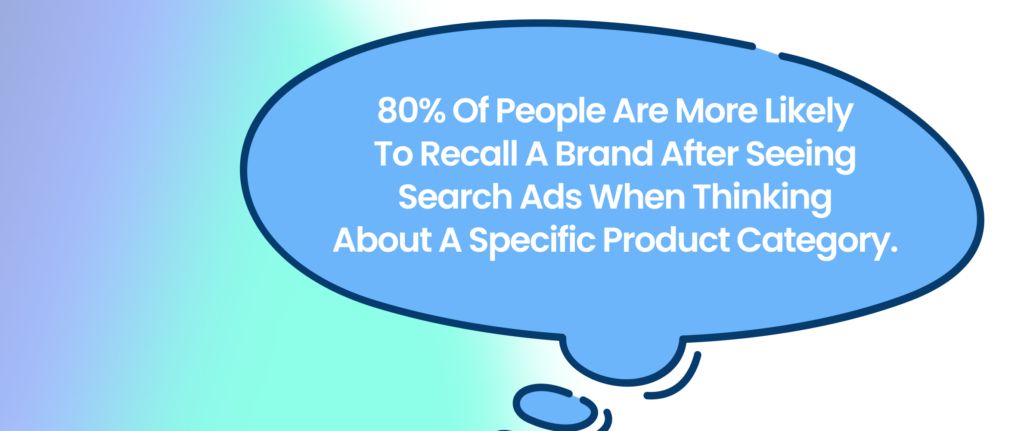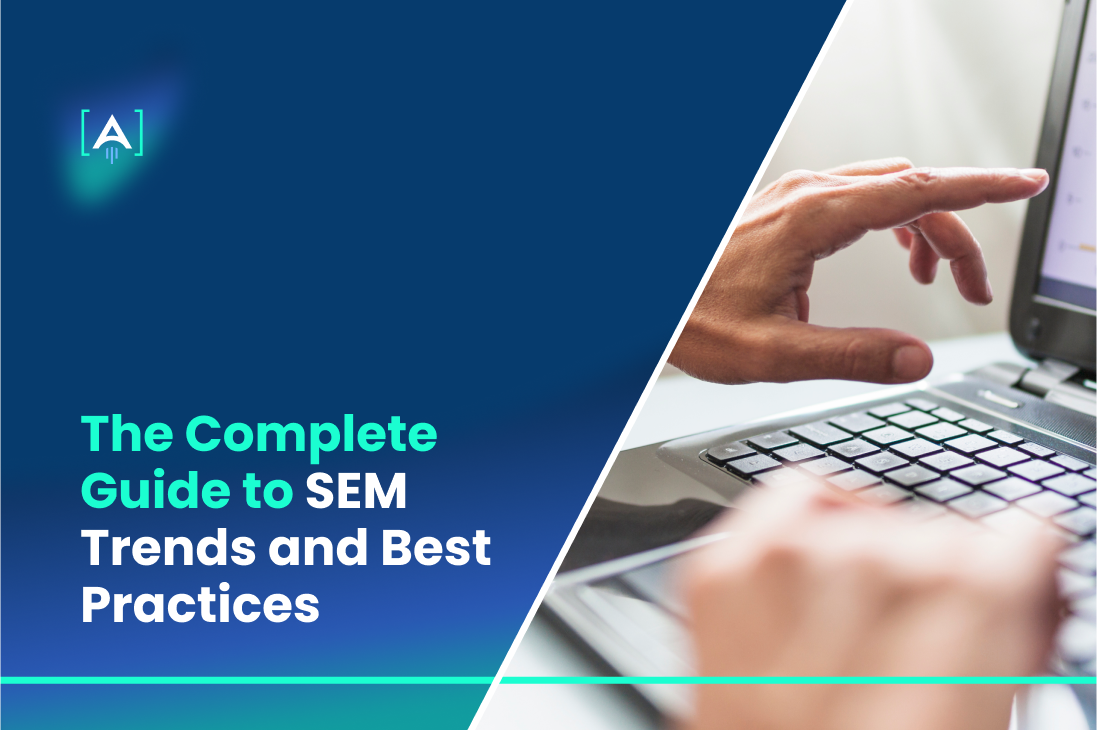Is your Search Engine Marketing (SEM) strategy keeping up with the latest trends?
As digital marketing evolves, what worked yesterday may not deliver the same results today.
SEM is no longer just about bidding on keywords—it’s about understanding your audience, leveraging technology, and staying ahead of the curve.
With new SEM trends emerging, like AI-powered tools and mobile-first indexing, businesses must adapt quickly.
Working with an expert SEM Agency can make all the difference, helping you navigate these changes and get better results.
In this guide, we’ll show you how to apply the latest search engine marketing trends.
By the end, you’ll know exactly how to improve your campaigns and drive better search engine rankings. Let’s dive in!
Why SEM Matters More Than Ever
SEM is one of the fastest ways to get your business in front of people when they’re actively searching for products or services.
Whether someone is looking for a local service like an “emergency plumber near me” or comparing prices on the latest tech gadgets, SEM trends put your business at the top of search results.
And it works. Search ads significantly boost brand awareness.

Source: Think with Google
In a study, 14.8% of the test group recalled the brand after seeing search ads, compared to just 8.2% of the control group.
This represents an 80% increase in top-of-mind awareness.
Why Intent-Based Marketing is a Game Changer
The power of SEM lies in intent-based marketing. Instead of reaching people who might be interested, SEM connects you with users who are already searching for what you offer.
For example, if you’re running a gym, an ad targeting “best gym memberships near me” will reach someone ready to decide.
This level of precision means you’re paying for clicks that are far more likely to convert, unlike traditional ads that target a broader, less interested audience.
Instant Visibility Beats Long Waits
While SEO takes months to increase the rankings, SEM gives you instant visibility.
When your ad goes live, you’re at the top of the search results, even if you’re competing with bigger brands.
This is perfect for businesses looking to drive immediate traffic and leads without the long wait that comes with organic growth.
Data That Drives Decisions
What makes SEM so effective is its data-driven nature. Every click, impression, and conversion is trackable.
This means you can easily see which keywords, ads, or strategies drive the most success.
- Target with precision: Focus on users based on their intent, location, device, and more.
- Budget flexibility: Only pay when someone clicks your ad, giving you full control over your spending.
- Measurable results: Adjust and improve in real time based on performance data.
Key SEM Trends to Watch
1. Target Smarter with Audience Segmentation
A major change in search engine marketing is the growing emphasis on audience segmentation.
Rather than using a single approach for everyone, businesses can now design highly targeted ads for specific audience groups.
This helps make your ads more relevant, leading to better engagement and higher conversion rates.
Here’s how you can use it effectively:
- Demographics: Customize ads based on age, gender, or location. For example, promote “winter coats” differently in New York vs. Miami.
- Interests: Target users based on their hobbies or online behaviors. Show fitness-related products to health-conscious audiences.
- Past Interactions: Retarget visitors who have already shown interest in your website but haven’t converted yet.
Source: Mowa
2. Boost Efficiency with Automation Tools
Automation is becoming one of the must-follow search engine marketing trends.
With campaigns’ growing complexity, businesses rely on SEM tools to simplify processes and improve efficiency.
These tools help manage everything from bidding strategies to ad placements, allowing you to focus on what matters most—growing your business.
Here’s how automation can boost your SEM performance:
- Smart Bidding: Tools like Google’s Smart Bidding automatically adjust your bids based on real-time data, optimizing for clicks, conversions, or any goal you set.
- Ad Scheduling: Automation allows you to schedule your ads to run when your target audience is most likely to be online and engaged.
- Dynamic Search Ads: These ads are automatically generated based on your website’s content, matching user searches to relevant pages without manually creating each ad.
Here are some popular SEM automation tools that can help streamline your campaigns:
- Google Ads Smart Bidding: Automatically optimizes bids for conversions, clicks, or impressions.
- WordStream: Provides automated bid management, keyword suggestions, and reporting.
- Optmyzr: Offers tools for automated bid adjustments, keyword optimization, and A/B testing.
- SEMrush: Automates keyword research, ad tracking, and competitor analysis.
- Acquisio: Uses machine learning to automate bid adjustments and optimize platform performance.
- AdEspresso: Simplifies the creation, testing, and optimization of ads, especially for Facebook and Google.
With mobile-first indexing, Google prioritizes your website’s mobile version when determining its rankings in search results.
Your search engine rankings could suffer if your site isn’t optimized for mobile.
As of February 2024, Google dominated the global mobile search engine market with a 95.37% share, while competitors like Yandex, Baidu, and Yahoo! each held less than 1% globally.
Source: Statista
Here’s how to adapt to this trend:
- Ensure your site looks and operates great on all devices. Websites that seamlessly adjust to screen sizes perform better in Google’s mobile-first indexing.
- Mobile users expect fast loading times. Research shows that pages loading in under 3 seconds see significantly lower bounce rates.
- Since many mobile searches have local intent, optimizing for local search terms can greatly improve visibility.
3. Attribution Modeling: Track What Truly Drives Conversions
Source: Ruler
Attribution modeling in search engine marketing helps you understand which of your ad interactions contributes most to a conversion.
Instead of relying on a simple “last-click” approach, where the final interaction gets all the credit, modern attribution models provide a more detailed view of the customer journey.

Source: Google
Google Ads now uses data-driven attribution as the default model, which leverages machine learning to distribute credit across all interactions in a customer’s conversion journey, rather than just the final click.
This approach analyzes how each touchpoint contributed to the overall conversion.
This allows you to see how each interaction—whether it’s an early ad click or a final purchase—helps push customers toward conversion.
How Attribution Models Can Improve Your SEM Strategy:
- Reach customers earlier: Attribution modeling can reveal opportunities to influence people earlier in their journey, not just at the conversion point.
- Optimize bidding: Use attribution data to refine your bids based on the value of each ad in the customer journey, not just the last one clicked.
- Better insights: With models like data-driven attribution, you can see the true impact of each touchpoint, helping you refine your campaigns.
4. Let AI Supercharge Your SEM Strategy
Artificial intelligence (AI) is transforming search engine marketing trends, making SEM campaigns easier to manage and more effective.
AI does a lot of the heavy lifting, from picking the best keywords to automatically adjusting ad bids.
How AI Enhances Keyword Targeting
AI analyzes search data and user behavior to find the most relevant and high-performing keywords.
It learns patterns, helping you target the right searches without manually guessing what might work.
For example, AI can identify that people searching “best running shoes” are more likely to convert than those searching for general terms like “shoes.”
AI-Powered Bid Adjustments
AI analyzes real-time data and adjusts bids on your ads to maximize conversions.
This means you don’t need to constantly manage bids—AI ensures your budget is used efficiently, showing ads when they’re most likely to lead to sales.
The Role of AI-Powered Search Engines
AI-powered search engines, such as those using large language models (LLMs) like ChatGPT, are revolutionizing how users interact with search.
These engines deliver results through conversational interactions, making searches more dynamic and tailored to user intent.
This shift is setting a new standard for search advertising, with AI-driven platforms becoming more competitive by delivering highly personalized results.
5. Get Ready for the Voice Search Revolution
Voice search is quickly becoming a key player in search engine marketing trends, driven by the rise of smart assistants like Google Assistant, Apple’s Siri, and Amazon’s Alexa.
With voice search dominating how users ask questions—especially about local businesses—optimizing your SEM strategy for this growing trend is essential.
Why Voice Search is Crucial for Local Businesses
Most voice search users ask about local businesses, such as “Where’s the best coffee shop nearby?” or “What time does the nearest pharmacy close?”
Running a local business presents a massive opportunity to capture these users by optimizing for voice search.
Here’s how to make sure your business shows up in voice results:
- Leverage Positive Reviews: Assistants like Siri often prioritize businesses with higher ratings and positive reviews, especially from platforms like Yelp.
Pro Tip: Ask satisfied customers to write reviews on Google and Yelp. This boosts your chances of showing up in voice search results for Siri and Alexa users.
Build a Voice Search Strategy Around the Top Assistants
Source: SEMrush
Each big three—Google Assistant, Siri, and Alexa—has its own algorithms and data sources. To succeed, you need to tailor your strategy for each:
- Google Assistant: Relies on Google My Business and local SEO. Make sure your business listing is complete and accurate.
- Apple’s Siri: Pulls data from sources like Yelp, so ensure your Yelp profile is optimized with current info and customer reviews.
- Amazon’s Alexa: Often focuses on smart home-related searches but is increasingly used for local search queries. Ensure your website is voice-search optimized.
Pro Tips for Optimizing SEM for Voice Search
- Add an FAQ Section to Your Website
Voice search users often ask questions, so creating an FAQ section on your site with clear, concise answers is a great way to capture these queries.
Structure your FAQ to reflect the natural, conversational tone of voice searches (e.g., “How late is your restaurant open?”).
- Enhance Local SEO
Since many voice searches have local intent, your SEM campaigns should focus heavily on local keywords, like “best mechanic near me.”
Improve your Google My Business profile and use location-specific keywords in your ads.
- Prioritize Mobile and Fast-Loading Pages
People mostly search via mobile devices, so optimize your site for speed and usability.
Use Google’s PageSpeed Insights to check and improve your mobile site speed.
- Use Conversational Keywords
People use a more conversational tone when speaking to voice assistants.
Instead of targeting only short keywords, focus on natural, question-based phrases like, “What’s the best hotel downtown?”
Key Takeaways for SEM Trends
So, are you ready to make the most of the latest SEM trends? Let’s revise some of the key strategies we covered:
- Segment your audience for more relevant ads. Personalized messaging for specific audience groups leads to higher engagement and conversion rates.
- Automate your SEM campaigns with smart tools for bidding, ad placement, and optimization. Automation boosts efficiency and allows for real-time adjustments without manual input.
- Use data-driven attribution to track the full customer journey. Understand which touchpoints drive conversions and optimize your bids based on actual value, not just the last click.
- Leverage AI to automate keyword selection and bid management. AI can help identify trends, adjust campaigns, and maximize ROI without constant oversight.
- Prepare for voice search by optimizing for conversational, natural-language queries. Focus on local search terms and FAQs to capture voice search users, especially on platforms like Google Assistant and Siri.
Maximize Your Results by Following These SEM Trends
If you want to see real growth, adopting the latest SEM trends is key.
From increasing conversions with AI to capturing voice search traffic, these strategies can transform your search engine marketing performance.
To fully optimize your SEM campaigns, partner with Azarian Growth Agency.
We’ll help you integrate cutting-edge trends like automation, data-driven attribution, and audience segmentation to ensure your campaigns deliver maximum ROI.
With our expertise, you’ll gain a competitive edge, drive more conversions, and achieve measurable results.
Let’s boost your SEM success together!

